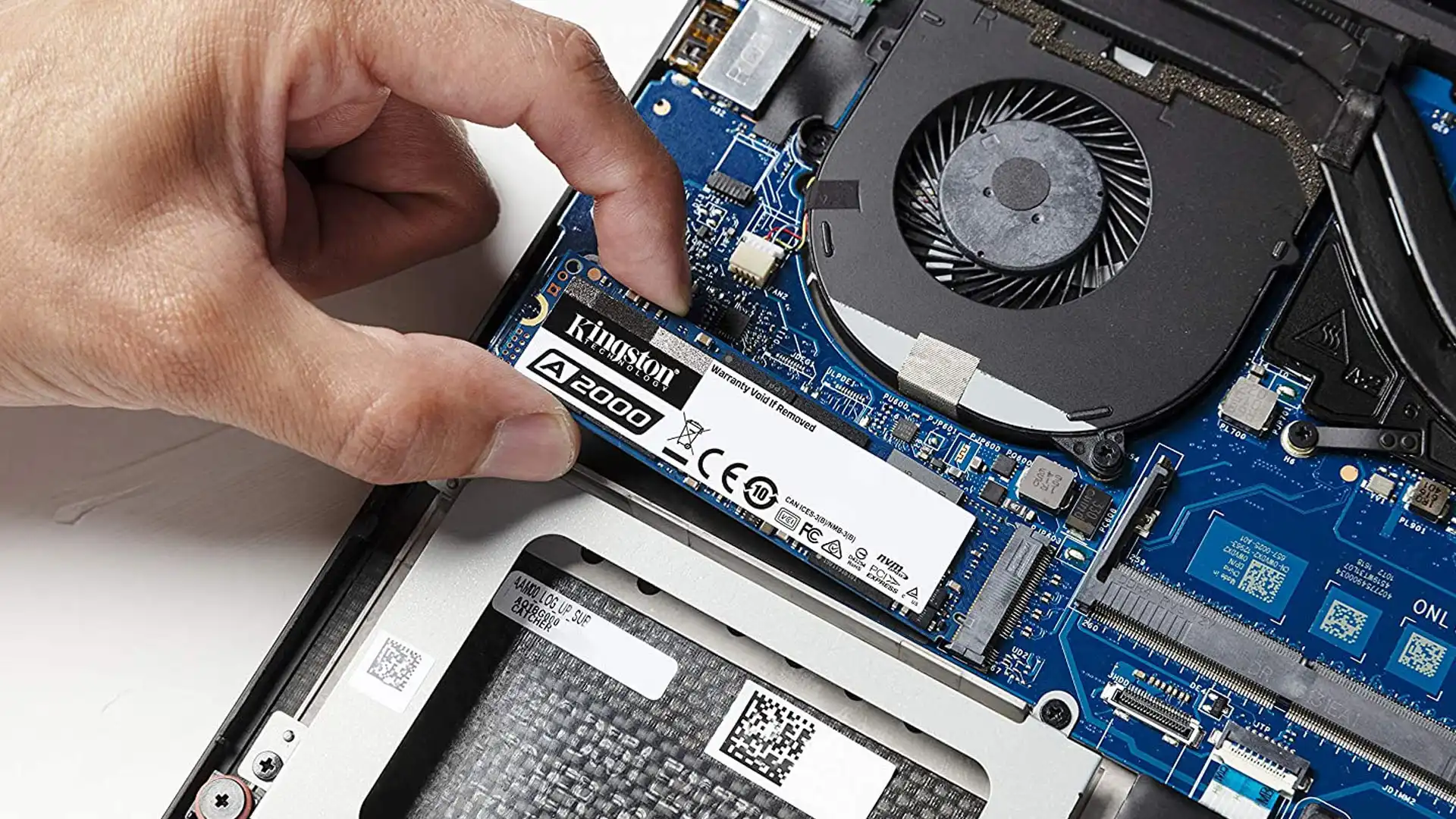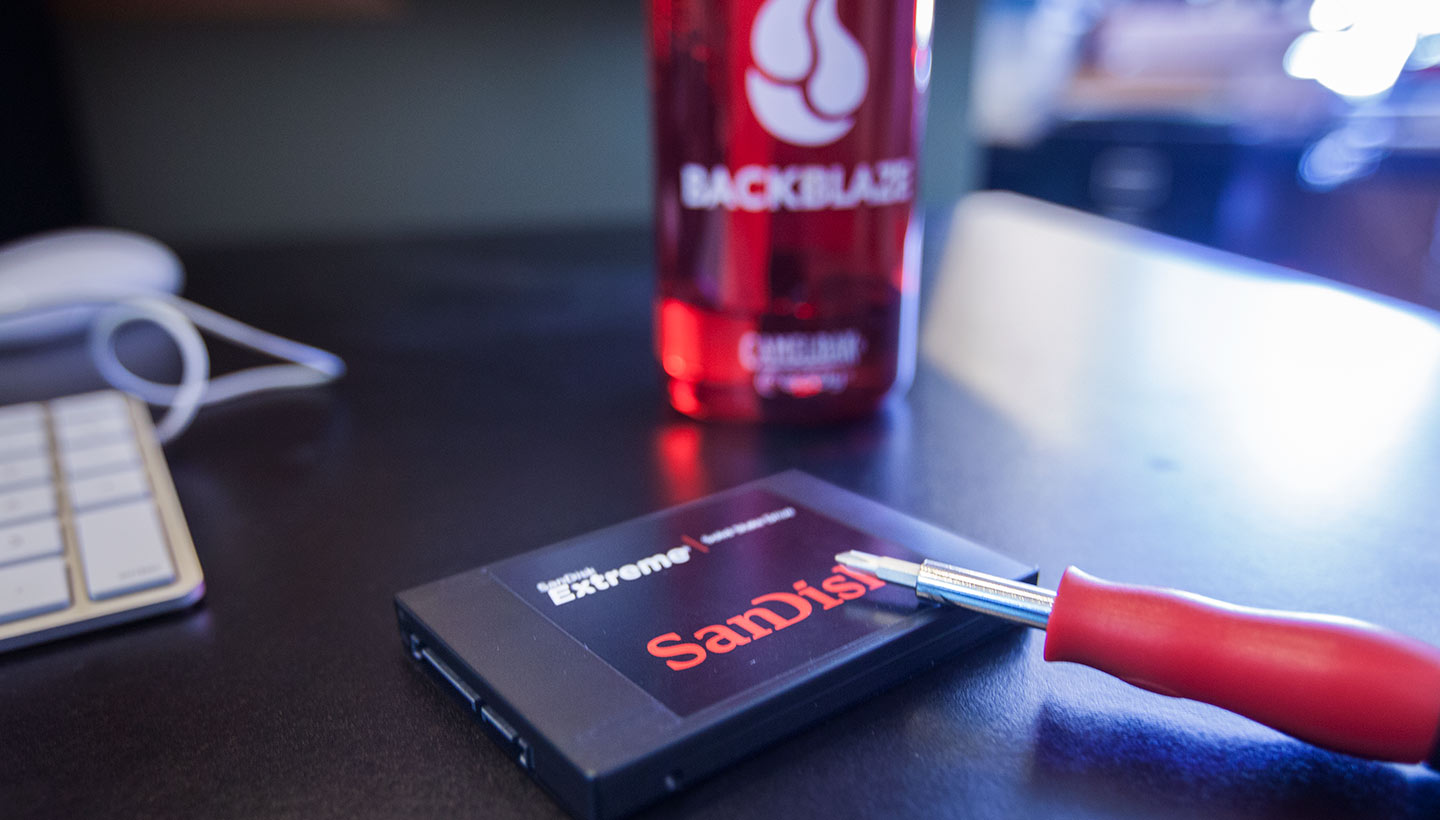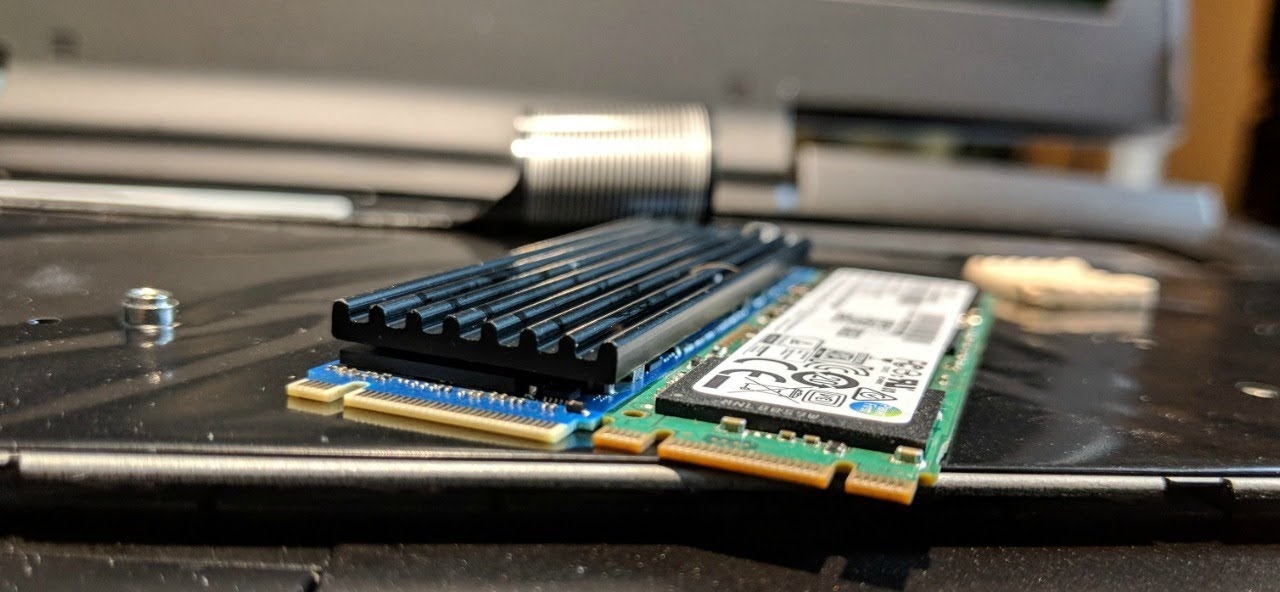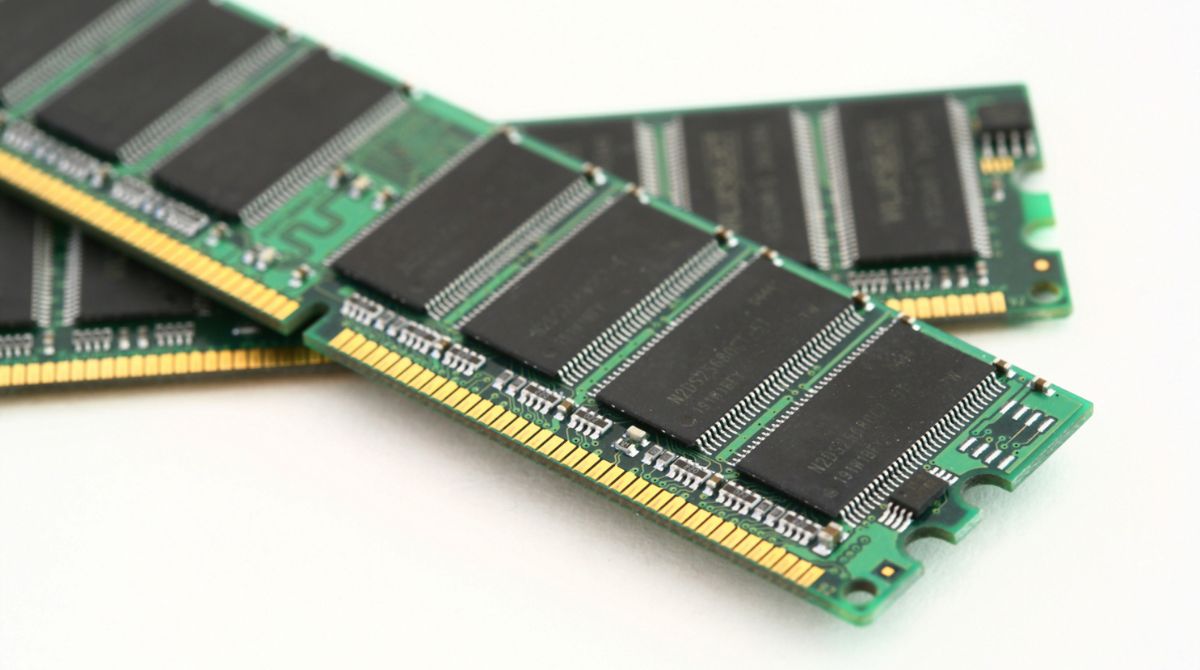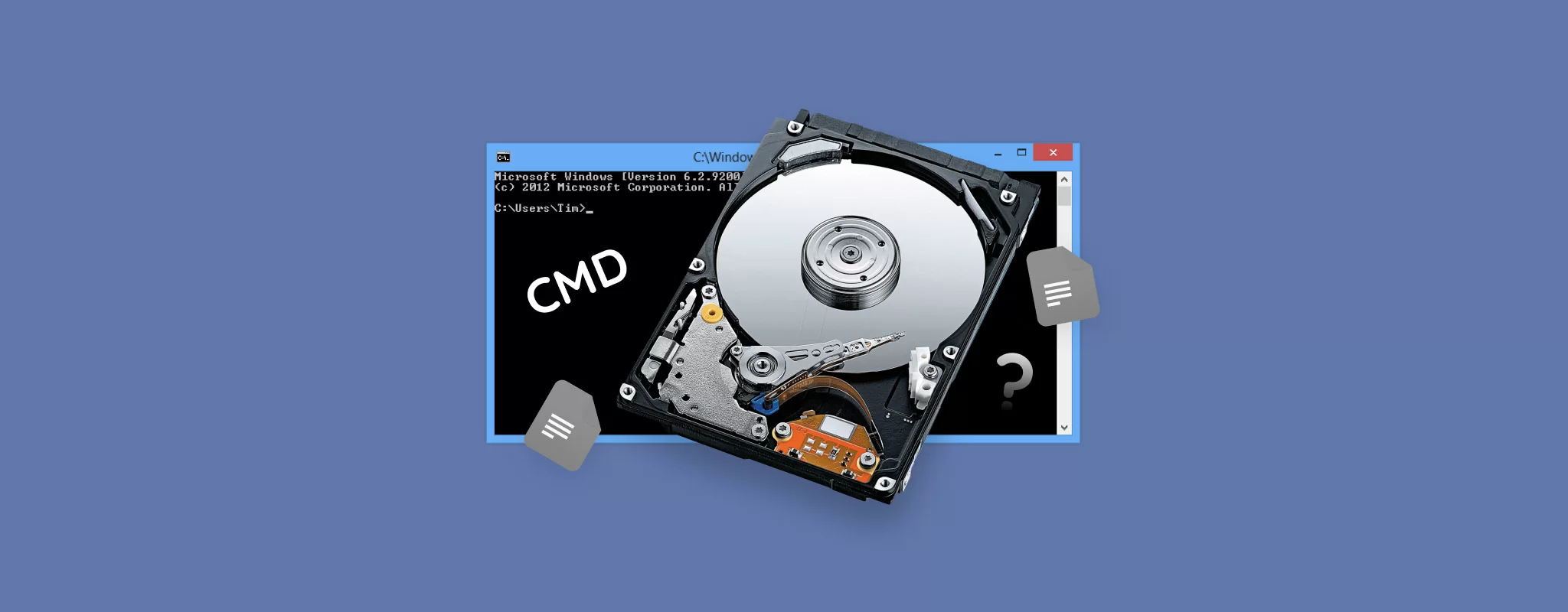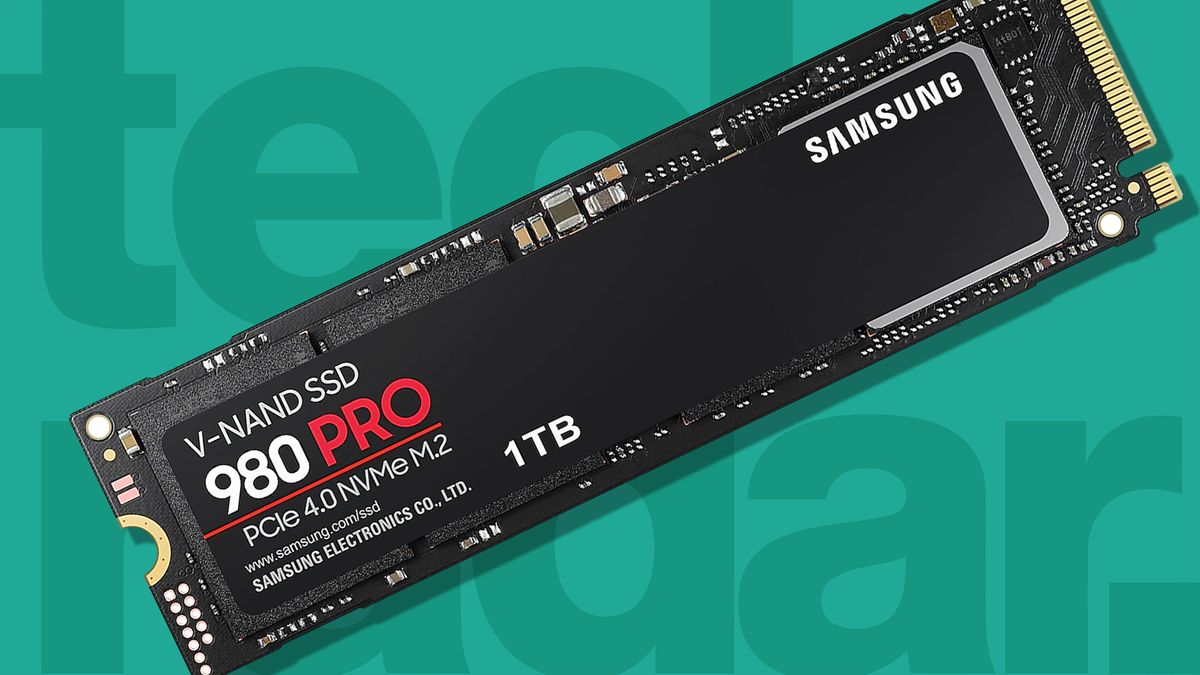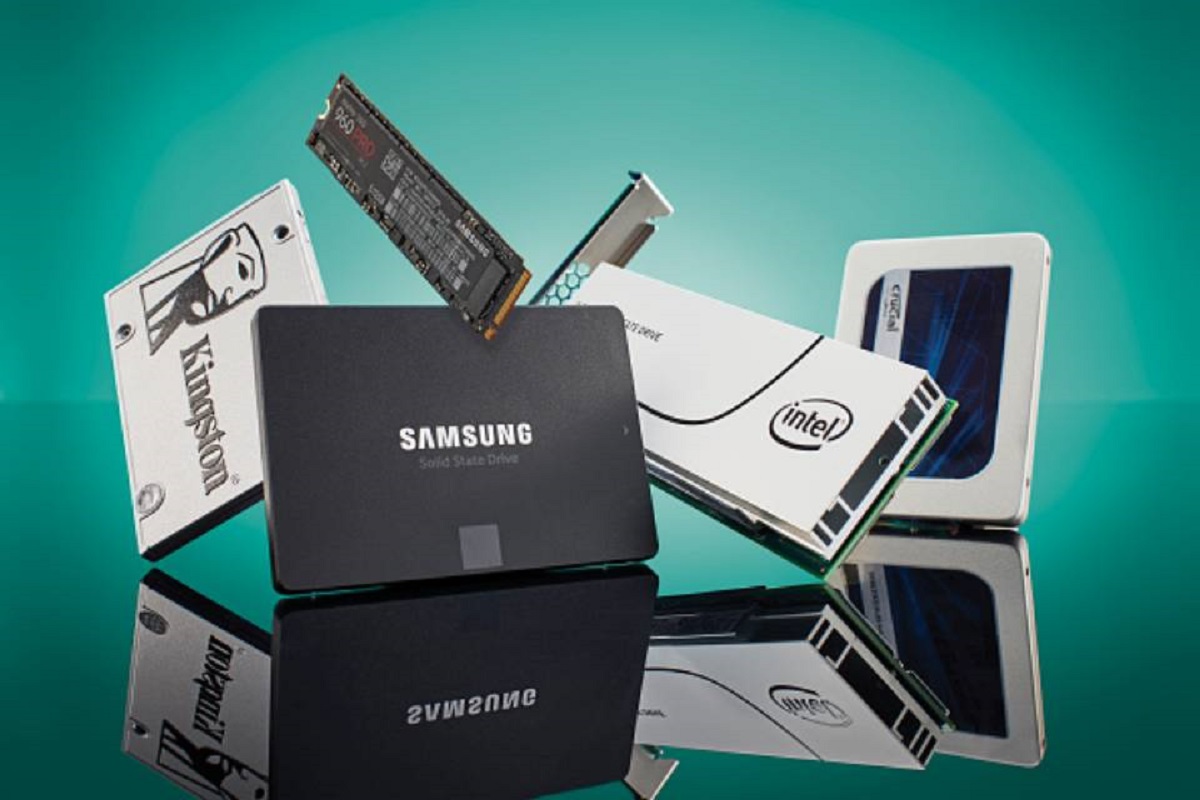Common Reasons Why Your SSD is Slow
SSDs, or Solid-State Drives, have become increasingly popular due to their faster performance and improved reliability compared to traditional hard drives. However, like any technology, SSDs may encounter performance issues that can cause them to slow down. If you’re experiencing a sluggish SSD, several common reasons could be to blame:
- Insufficient or Unoptimized Operating System: An outdated or bloated operating system can take a toll on your SSD’s performance. Make sure you have the latest updates installed and consider optimizing your operating system to minimize unnecessary processes and background tasks.
- Running Out of Storage Space: SSDs perform best when they have some free space available. If your SSD is nearly full, it can affect its performance. Consider freeing up space by deleting unnecessary files or transferring them to an external storage device.
- Fragmented Data: Over time, data on an SSD can become fragmented, meaning it’s scattered across multiple storage locations. This fragmentation can slow down access times. Running a disk defragmentation tool specifically designed for SSDs can help optimize performance.
- Firmware Issues: Outdated firmware can lead to stability and performance problems. Check the manufacturer’s website for any firmware updates that may address known issues or improve performance.
- Incompatible or Outdated Drivers: Incompatible or outdated drivers can also cause SSD performance issues. Ensure that you have the latest drivers installed for your SSD and other related hardware components.
- System Configuration Settings: Incorrect system settings can negatively impact SSD performance. Check your power management settings, ensure your SSD is set to AHCI mode in the BIOS, and verify that TRIM is enabled for your SSD.
- Overheating: Excessive heat can reduce the performance and lifespan of an SSD. Ensure that your computer has adequate cooling and that the airflow around your SSD is not obstructed.
- Power Issues: Inadequate or unstable power supply can cause performance problems with your SSD. Ensure that your computer’s power supply is in good condition and that the SSD is connected properly.
- Memory Issues: Insufficient RAM or a malfunctioning memory module can impact SSD performance. Check your system’s memory configuration and test your RAM for any issues.
- Utilization by Other Programs: Background processes or resource-intensive programs running on your system can consume the SSD’s resources, leading to slower performance. Monitor and close any unnecessary programs or processes to alleviate the strain on your SSD.
By identifying and addressing these common issues, you can improve the speed and performance of your SSD. Keep in mind that these solutions may vary depending on your specific hardware and software configuration. If you’re still experiencing slow SSD performance after attempting these fixes, it may be worth consulting a professional or contacting the manufacturer for further assistance.
Insufficient or Unoptimized Operating System
Your operating system plays a crucial role in the overall performance of your SSD. An insufficient or unoptimized operating system can cause your SSD to slow down. Here are some factors to consider:
Firstly, check if your operating system is up to date. Manufacturers regularly release updates to address bugs, security vulnerabilities, and performance optimizations. These updates can significantly improve the performance of your SSD. Make sure to install the latest updates to benefit from these enhancements.
Additionally, over time, operating systems can become bloated with unnecessary files, programs, and services. These can put extra strain on your SSD and slow down its performance. Consider optimizing your operating system by removing unused programs, disabling unnecessary startup processes, and cleaning up temporary files.
Another optimization technique is to disable or modify indexing services. Indexing services scan files and folders on your computer to provide faster search results, but they can consume system resources and impact SSD performance. If you don’t rely heavily on search functions, disabling or limiting indexing can free up resources for your SSD.
Furthermore, enabling TRIM is critical for maintaining SSD performance. TRIM allows the operating system to inform the SSD about which blocks of data are no longer in use. This helps the SSD optimize its internal processes and improves its overall performance. Ensure that TRIM is enabled in your operating system settings.
Lastly, consider checking your power management settings. Some power-saving features, such as aggressive CPU throttling or turning off hard drives after a short period of inactivity, can negatively impact SSD performance. Adjust these settings to strike a balance between power efficiency and SSD performance.
By addressing these aspects of your operating system, you can optimize its performance and effectively enhance your SSD’s speed and responsiveness. Remember to regularly check for updates, remove unnecessary files and programs, enable TRIM, and review your power management settings. These steps will help ensure that your operating system is working harmoniously with your SSD, providing you with the best performance possible.
Running Out of Storage Space
One common reason for a slow SSD is running out of storage space. When your SSD is nearly full, it can hinder its performance and impact overall system responsiveness. Here’s why:
As an SSD reaches its maximum capacity, it becomes challenging for the drive to find contiguous blocks of free space to store new data. Instead, the drive needs to split files and store them in non-contiguous segments, which can result in slower read and write speeds. Additionally, the lack of free space can cause the drive to constantly shuffle data around, contributing to slower performance.
To address this issue, consider freeing up space on your SSD. Start by identifying unnecessary or large files that you can delete or move to an external storage device. Check your Downloads folder, temporary files, and any other directories where you might have accumulated unnecessary data.
You can also utilize disk cleanup tools provided by your operating system to remove temporary files, system caches, and old installations. These tools can help reclaim significant amounts of space and improve SSD performance.
If you have limited space but still need to keep certain files, offloading them to an external hard drive or cloud storage solution can help. Cloud storage services allow you to access your files from anywhere while freeing up valuable SSD space.
Another option is to use storage management features provided by your operating system. For example, Windows 10 offers a feature called “Storage Sense” that automatically monitors and frees up disk space by deleting temporary files and older versions of Windows updates.
Regularly monitoring and managing your storage space will help ensure that your SSD has enough breathing room for optimal performance. Consider implementing strategies such as deleting unnecessary files, utilizing storage management tools, and offloading infrequently used files to external storage solutions. By doing so, you can avoid running into the performance issues caused by a full SSD.
Fragmented Data
Over time, data on your SSD can become fragmented, impacting its performance. Fragmentation occurs when files are stored in non-contiguous blocks, causing the drive to work harder to access and read the data. Here’s how fragmented data can slow down your SSD:
When a file is saved on an SSD, the data is not necessarily stored in a sequential manner. As files are modified or deleted, empty spaces are created, and new data is written in these available spaces. Over time, this can lead to fragmented data, where parts of a file are spread across different locations on the drive.
Fragmentation can cause slower read and write speeds because the drive needs to search for and retrieve data from various locations. This fragmentation-induced overhead can impact overall system performance and lead to longer loading times for applications, files, and system boot-ups.
To address fragmentation on your SSD, you can use disk defragmentation tools specifically designed for SSDs. Unlike traditional hard drives, SSDs do not require regular defragmentation as they have faster access times and don’t suffer from the physical limitations of mechanical parts. However, SSD-specific defragmentation tools can optimize performance by reorganizing and consolidating fragmented data on the drive.
It’s important to note that not all SSDs benefit from defragmentation, particularly modern SSDs that use advanced controllers and wear-leveling algorithms. Check your SSD manufacturer’s recommendations to determine if defragmentation is necessary or beneficial for your specific model.
Furthermore, some operating systems provide built-in optimization tools that can help minimize fragmentation. For example, Windows 10 includes a feature called “Optimize Drives” that can trim and optimize SSDs, including handling fragmentation issues.
By periodically running SSD-specific defragmentation tools or using built-in optimization features, you can help maintain optimal performance by reducing fragmentation on your SSD. However, always ensure to follow the guidelines provided by your SSD manufacturer to avoid unnecessary or potentially harmful actions.
Firmware Issues
Firmware is the software that is embedded in the hardware of your SSD. It acts as the interface between the SSD and your operating system, controlling the drive’s functionality and behavior. Firmware issues can manifest in various ways and may significantly impact the performance of your SSD. Here’s what you need to know:
Outdated firmware can cause stability issues, compatibility problems, and even performance degradation. Manufacturers periodically release firmware updates to address known bugs, improve performance, and enhance SSD reliability. It is essential to check your SSD manufacturer’s website regularly for any available firmware updates and apply them as recommended.
When updating the firmware, ensure that you carefully follow the instructions provided by the manufacturer. Improper firmware updates can lead to data loss or permanent damage to your SSD. It’s always wise to back up your important data before proceeding with any firmware update.
Aside from updating the firmware, it’s also crucial to keep an eye out for any firmware-related issues that may arise. Symptoms of firmware issues can include intermittent slowdowns, system freezes, or even complete SSD failure. If you experience any of these issues, contact your SSD manufacturer’s support for assistance.
Some SSD manufacturers provide firmware management tools that make the updating process more straightforward and automated. These tools can scan your system, identify the SSD model, and check for any available firmware updates. Using these tools can help ensure that your SSD firmware remains up to date.
Moreover, before purchasing an SSD, it’s advisable to research the manufacturer’s track record for firmware updates and support. Opting for reputable brands known for their commitment to providing regular firmware updates can help mitigate potential issues down the line.
By staying proactive in monitoring and updating your SSD firmware, you can prevent and resolve performance issues related to outdated firmware. Regularly check for firmware updates, follow manufacturer recommendations, and seek support when encountering firmware-related problems to maintain optimal SSD performance.
Incompatible or Outdated Drivers
Drivers serve as the communication bridge between your operating system and your SSD. Incompatible or outdated drivers can hinder the performance of your SSD and lead to sluggishness. Here’s why:
When manufacturers release new SSD models or firmware updates, they often provide corresponding driver updates to ensure compatibility and optimize performance. Using outdated or generic drivers that lack specific optimizations for your SSD can result in reduced speeds and overall performance.
To resolve driver-related performance issues, start by checking the website of your SSD manufacturer for any available driver updates. These updates can provide bug fixes, compatibility improvements, and performance enhancements specific to your SSD model.
If you’re using a generic driver provided by the operating system, consider installing the manufacturer’s recommended driver for your SSD. This optimized driver can unlock the full potential and performance features of your SSD.
Make sure to follow the installation instructions provided by the manufacturer carefully. Improper driver installation can lead to system instability or even damage to your SSD. It’s always wise to create a backup of your important data before making any driver changes.
Additionally, it’s worth mentioning that outdated motherboard or chipset drivers can also impact the performance of your SSD. Ensure that these drivers are up to date to ensure optimal system performance and compatibility with your SSD.
Regularly checking for driver updates and staying up to date with the latest versions can help you maintain the best performance from your SSD. By utilizing manufacturer-recommended drivers and keeping your system drivers current, you can ensure that your SSD operates seamlessly with your operating system, allowing it to perform at its peak efficiency.
System Configuration Settings
The configuration settings of your system can greatly impact the performance of your SSD. Adjusting certain settings can help optimize your SSD’s speed and responsiveness. Here are some key configuration settings to consider:
Firstly, ensure that your SSD is set to AHCI (Advanced Host Controller Interface) mode in the BIOS. AHCI mode enables advanced features such as Native Command Queuing (NCQ) and hot swapping support, which can improve SSD performance. Changing to AHCI mode may require specific steps, so consult your motherboard or computer manufacturer’s documentation for instructions.
Another critical setting to check is the TRIM functionality. TRIM allows the operating system to inform the SSD about which data blocks are no longer in use, enabling the drive to optimize its performance. Verify that TRIM is enabled for your SSD by opening the Command Prompt in Windows and typing in “fsutil behavior query disabledeletenotify”. If the result is “DisableDeleteNotify = 0” (zero), TRIM is already enabled. Otherwise, you can enable TRIM by entering “fsutil behavior set DisableDeleteNotify 0” in the Command Prompt.
Power settings can also impact your SSD’s performance. Ensure that your power plan settings are balanced and not overly aggressive in terms of power saving. Aggressive power-saving settings may cause frequent power state transitions, which can introduce delays and affect the responsiveness of your SSD. Adjust these settings to strike a balance between power efficiency and SSD performance.
Additionally, optimizing your system’s virtual memory settings can help improve SSD performance. Virtual memory, also known as the page file, is a portion of your hard drive or SSD that the operating system uses as additional RAM. Make sure the virtual memory is set to automatically manage its size, or you can manually set it to an appropriate value based on your system’s RAM capacity and SSD size. This prevents excessive reads and writes to the SSD, enhancing overall performance.
Lastly, consider disabling or modifying any unnecessary background or startup processes that may consume system resources. Resource-intensive programs running simultaneously with your SSD-intensive tasks can compete for resources, leading to slower SSD performance. Disable or remove any unnecessary programs or processes to alleviate the strain on your SSD.
By reviewing and adjusting system configuration settings, such as AHCI mode, TRIM functionality, power settings, virtual memory, and reducing unnecessary processes, you can optimize your SSD’s performance. These configuration tweaks can help your SSD deliver faster speeds and ensure a smoother computing experience.
Overheating
Overheating is a common issue that can contribute to the slowdown of your SSD. Excessive heat can adversely affect the performance and lifespan of your SSD. Here’s why overheating occurs and what you can do to mitigate it:
SSDs generate heat during regular operation, and prolonged exposure to high temperatures can lead to performance degradation. When the drive exceeds its optimal temperature range, it may utilize thermal throttling, a self-protection mechanism that reduces performance to prevent further temperature increases. This can result in slower read and write speeds and reduced overall system responsiveness.
To avoid overheating, ensure that your computer’s cooling system is functioning optimally. Make sure that the fans are clean and free from dust or obstruction. Regularly clean the inside of your computer case to remove accumulated dust, which can impede proper airflow and contribute to overheating issues.
If you have a laptop, use it on a hard surface that allows for proper ventilation. Avoid using it on soft surfaces like beds or couches, as they can block airflow and cause the laptop to overheat.
In some cases, adding additional cooling components such as case fans or a CPU cooler can help dissipate heat more effectively and keep your system temperatures within safe limits. However, keep in mind that modifying your computer’s hardware may void warranties or require professional installation.
If your SSD is located near other heat-generating components, consider installing a heat sink or heat shield specifically designed for your SSD model. These accessories can help dissipate excess heat and protect your SSD from potential performance issues caused by overheating.
Monitoring your SSD’s temperature is also crucial. Various third-party software tools are available that can provide real-time temperature readings for your SSD. Keeping an eye on the temperature can help you identify potential overheating problems early on, allowing you to take appropriate action.
If you consistently experience overheating issues, it may be worth consulting a computer technician or contacting your computer manufacturer’s support for further troubleshooting and guidance. They can provide more specific recommendations based on your system configuration and help address any underlying issues contributing to the overheating problem.
By ensuring proper cooling and monitoring SSD temperature, you can prevent overheating issues and maintain optimal performance for your SSD.
Power Issues
Power-related issues can impact the performance and stability of your SSD. Insufficient or unstable power supply can lead to slowdowns and even data corruption. Here’s how power issues can affect your SSD and what you can do to mitigate them:
An inadequate power supply can result in insufficient power delivery to your SSD, causing performance issues. Ensure that your computer’s power supply meets the requirements of your hardware components, including your SSD. If you suspect power supply problems, consider upgrading to a higher wattage power supply to ensure stable power delivery.
Using a high-quality power supply with proper voltage regulation and stable power output is crucial for SSD performance. Cheap or low-quality power supplies may deliver inconsistent power, leading to data read and write errors, and possibly damaging your SSD.
In addition to the power supply, ensure that the power cables connecting your SSD are secure and properly inserted. Loose or damaged cables can cause intermittent power connections, resulting in reduced SSD performance or even drive failure. Double-check and reseat all power cables to ensure a secure and reliable connection.
Using a UPS (Uninterruptible Power Supply) can also help protect your SSD and entire system from power-related issues. A UPS acts as a power backup during power outages, voltage spikes, or drops. This additional layer of protection can prevent sudden power interruptions that may lead to data loss or corruption on your SSD.
Moreover, enabling the “Write caching” feature for your SSD can sometimes result in improved performance. This feature allows the operating system to temporarily store write operations in RAM, reducing the need for immediate disk writes. However, it’s crucial to ensure a reliable power source and UPS backup when utilizing write caching, as sudden power loss can lead to data loss or corruption.
If you encounter power-related issues consistently or suspect that your SSD is not receiving sufficient or stable power, it may be helpful to consult a computer technician or contact your power supply or SSD manufacturer’s support for further assistance.
By ensuring a stable and sufficient power supply, using high-quality power cables, and considering the use of a UPS, you can help mitigate power-related issues and improve the overall performance and reliability of your SSD.
Memory Issues
Memory issues can also contribute to SSD performance problems. Insufficient or faulty RAM modules can affect the overall speed and responsiveness of your system, including the performance of your SSD. Here’s how memory issues can impact your SSD and what you can do to address them:
Insufficient RAM can lead to increased reliance on virtual memory, which is stored on your SSD. Virtual memory, also known as the page file, is used by the operating system to compensate for the shortfall of physical RAM. When the amount of available physical RAM is limited, the system is forced to swap data between RAM and the SSD frequently, which can drastically slow down performance.
To mitigate memory-related performance issues, consider upgrading your RAM to meet the requirements of your system’s workload. Increasing the amount of RAM available can reduce the reliance on virtual memory and improve overall system performance. Consult your computer’s specifications or a trusted technician to determine the maximum RAM capacity your system supports and to select compatible memory modules.
Furthermore, faulty or malfunctioning RAM modules can cause data corruption and system instability. If you suspect that your RAM may be causing performance issues, you can run memory diagnostic tests to identify potential errors. Many operating systems have built-in memory diagnostic tools, such as Windows Memory Diagnostic Tool, which can help identify and isolate any faulty RAM modules.
It’s essential to resolve any memory-related issues promptly. Faulty RAM can lead to data loss or even system crashes, jeopardizing the integrity of your SSD and other components.
Additionally, verifying that your RAM modules are properly seated in their slots can prevent connectivity issues that may affect performance. Ensure that the memory modules are fully inserted and locked into place.
Regularly cleaning the memory slots, using compressed air or contact cleaner, can remove any debris or oxidation that may cause poor connections. Additionally, if you have multiple RAM modules, try running your system with one module at a time to identify if any particular module is causing performance issues.
If you continue to experience memory-related performance problems, it’s advisable to consult a computer technician or contact your RAM manufacturer’s support for further guidance. They can provide specialized diagnostics and troubleshooting steps to help isolate and rectify any memory-related issues.
By ensuring an adequate amount of reliable and compatible RAM and addressing any faulty or malfunctioning modules, you can improve the overall performance and stability of your system, enhancing the performance of your SSD as a result.
Utilization by Other Programs
While your SSD may be functioning optimally, other programs running on your system can impact its performance. Resource-intensive programs or background processes can consume valuable system resources, including the SSD’s processing power and bandwidth, leading to slower performance. Here’s how the utilization of other programs can affect your SSD and what you can do to alleviate the strain:
Resource-intensive programs, such as video editing software, graphic design applications, or data-intensive games, can put a significant load on your SSD. These programs require constant read and write operations, which can limit the available bandwidth for other system processes and slow down overall system performance. If you encounter slowdowns while running such programs, consider closing other non-essential applications to free up resources for the task at hand.
Background processes and system services can also impact your SSD’s performance. For example, antivirus scans, system backups, or automatic software updates can consume system resources, including SSD processing power. Configure these tasks to run during periods when you are not actively using your computer or adjust their priority to avoid significant performance impact on your SSD.
Monitoring and managing startup programs is another way to minimize the strain on your SSD. Many applications automatically launch during system startup and continue running in the background, consuming valuable resources. Review the list of startup programs and disable any unnecessary applications that you don’t frequently use. This can help reduce the load on your SSD and improve overall system performance.
One way to identify resource-hungry programs is by using task manager tools or system monitoring software. These tools provide real-time information about CPU, memory, and disk usage, allowing you to identify performance bottlenecks caused by specific applications or processes. By identifying the resource-intensive programs, you can take appropriate action, such as closing them or adjusting their settings to reduce their impact on your SSD’s performance.
Another option is to optimize your SSD’s performance by enabling the “High-Performance” power plan in your operating system’s power settings. This setting ensures that your system allocates maximum resources to your SSD, enhancing its performance during demanding tasks. However, keep in mind that the high-performance power plan may consume more power, which can lead to increased energy usage and potentially higher operating temperatures.
By monitoring resource utilization, managing startup programs, and adjusting power settings, you can alleviate the strain on your SSD caused by other programs and optimize its performance. Consider prioritizing resources for the task at hand, closing unnecessary applications, and adjusting settings to strike a balance between system responsiveness and SSD workload.
Tips to Improve SSD Speed
If you want to further enhance the speed and performance of your SSD, consider implementing the following tips:
1. Enable TRIM: Ensure that TRIM is enabled for your SSD. TRIM allows the operating system to inform the SSD about which data blocks are no longer in use, enabling the drive to optimize its performance.
2. Update Firmware and Drivers: Regularly check for firmware updates from your SSD manufacturer and install them as recommended. Also, keep your drivers up to date, including the SSD driver, chipset driver, and any other related drivers.
3. Optimize Operating System: Keep your operating system up to date with the latest updates and patches. Consider disabling unnecessary startup programs and services to free up system resources for your SSD.
4. Manage Storage Space: Maintain some free space on your SSD. When an SSD is near its capacity, it can affect performance. Remove unnecessary files or transfer them to an external storage device to free up space.
5. Avoid Overheating: Ensure that your computer has proper cooling. Excessive heat can impact SSD performance. Clean the fans and ensure proper airflow to prevent overheating.
6. Run Disk Cleanup: Regularly use disk cleanup tools provided by your operating system to remove temporary files, system caches, and old installations. This helps free up space and improve SSD performance.
7. Defragmentation (if applicable): Check if your SSD requires defragmentation. Some older SSD models benefit from occasional defragmentation to optimize performance. However, check your SSD manufacturer’s recommendations before performing any defragmentation.
8. Upgrade to a Higher Bandwidth Connection: If your SSD uses a SATA connection, consider upgrading to a faster interface such as NVMe (Non-Volatile Memory Express) if your motherboard supports it. NVMe offers significantly faster data transfer speeds.
9. Enable RAPID Mode (if available): Some SSDs come with a feature called RAPID mode, which uses a portion of your system’s RAM as a cache to improve SSD performance. Check if your SSD supports this feature and use it if appropriate and supported.
10. Perform Regular Maintenance: Keep your SSD well-maintained by performing regular scans for errors or bad sectors using the built-in tools provided by your operating system or third-party software. This helps ensure the health and longevity of your SSD.
Implementing these tips and best practices can help you maximize the speed and performance of your SSD. Remember that the effectiveness of these tips may vary depending on your specific hardware and software configuration. It’s always recommended to consult your SSD manufacturer’s guidelines and documentation for optimal settings and recommendations.







